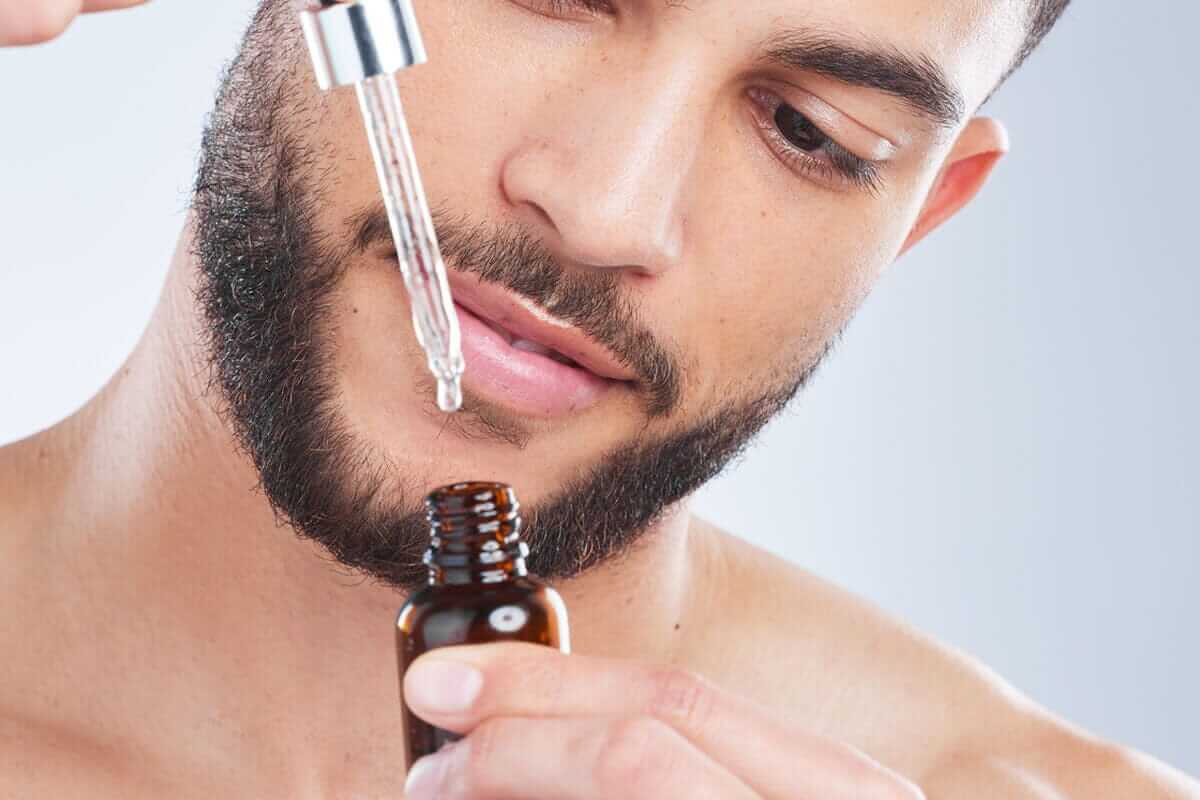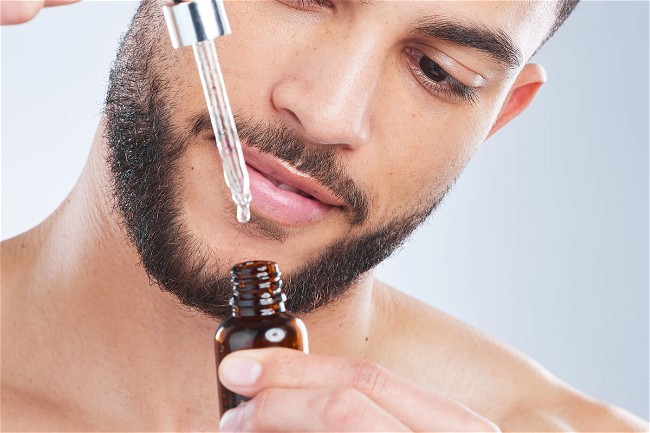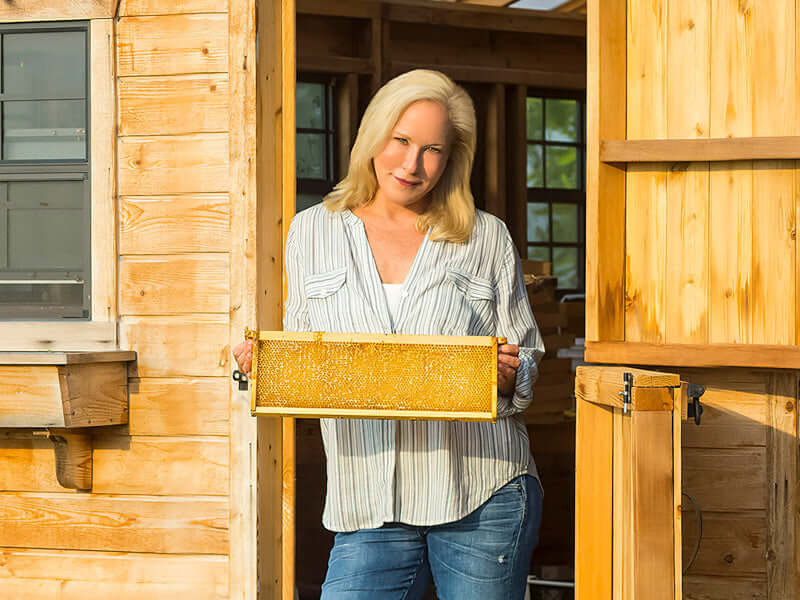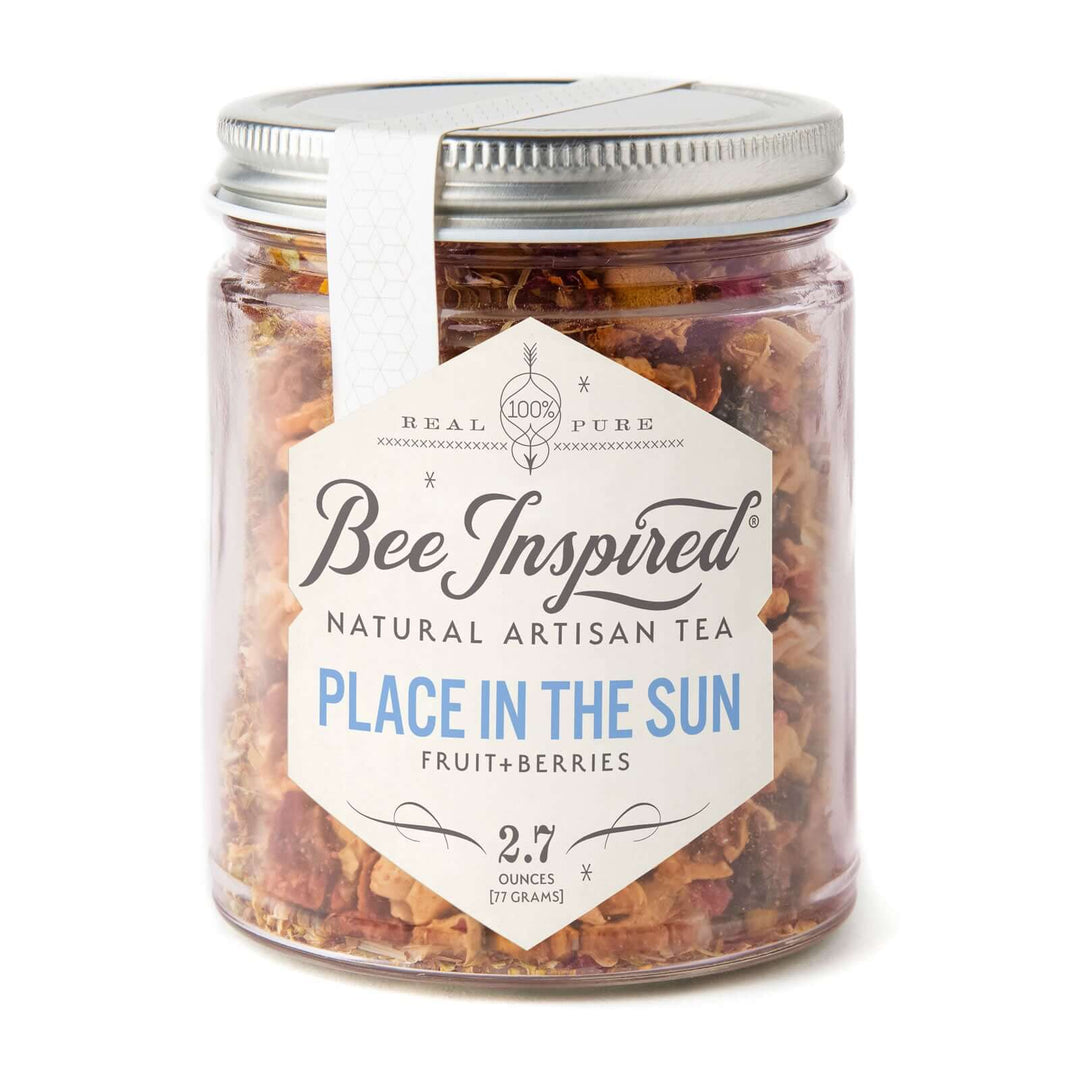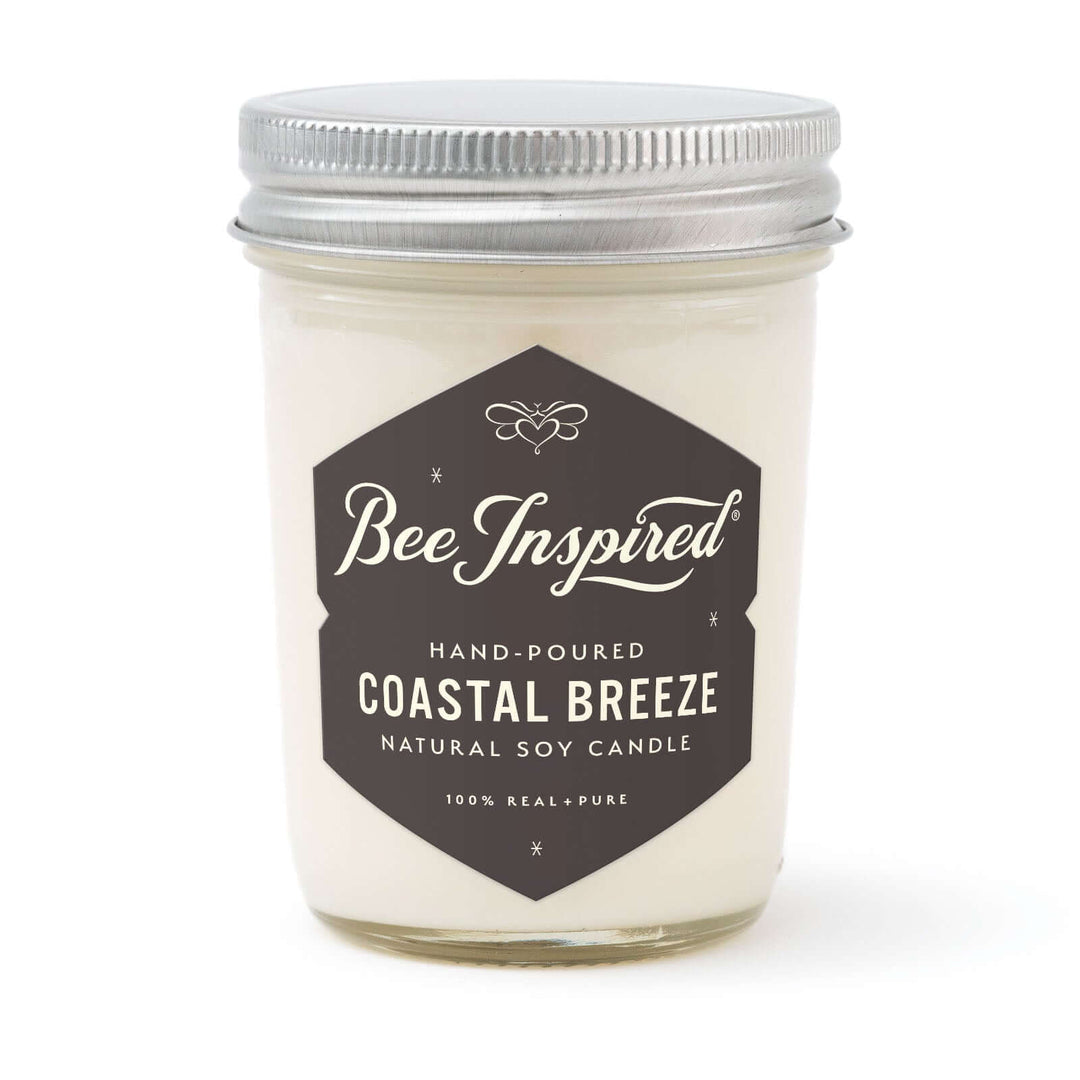Growing a well-groomed beard requires more than just letting it grow wild. A quality beard oil can transform coarse, unruly facial hair into a soft, manageable beard that looks and feels great. While commercial beard oils can cost $15-25 per bottle, making your own DIY beard oil at home costs just $2-3 per batch and allows you to customize the scent and ingredients to your preferences.
Our Sea + Tea Body Oil can double as a hair, body AND beard oil for those who prefer ready-made options, but there's something satisfying about creating your own blend.
What Makes a Good Homemade Beard Oil?
The best DIY beard oil recipes combine carrier oils (base oils that dilute and carry other ingredients) with essential oils (concentrated plant extracts that provide scent and additional properties). This simple combination creates an effective grooming product that:
- Softens coarse beard hair
- Moisturizes the skin underneath
- Reduces itchiness and flaking ("beardruff")
- Provides a pleasant, natural scent
- Helps with beard styling and manageability
Why Make Your Own Beard Oil?
Cost-Effective
Store-bought beard oils typically cost $10-20 for 1-2 ounces. With this homemade beard oil recipe, you can make the same amount for $2-3, and the ingredients will last for multiple batches. This economical approach aligns with our philosophy of sustainable living - making quality products at home reduces packaging waste and gives you control over ingredients.
Customizable
Control exactly what goes on your face and hair. Choose carrier oils based on your skin type and select essential oils for your preferred scent profile. This customization mirrors how our bees create unique honey varietals based on the flowers they visit - each batch is perfectly suited to its environment.
No Water, No Bacteria
This DIY beard oil recipe is anhydrous (water-free), which means it naturally resists bacterial growth without needing preservatives. However, the oils will eventually oxidize, so use within 6-12 months.
Quality Control
Know exactly what ingredients you're using and their quality, rather than relying on potentially diluted commercial formulations.

Essential Ingredients for DIY Beard Oil
Carrier Oils (Choose 1-2)
Jojoba Oil - Our top recommendation
- Technically a wax that closely mimics skin's natural sebum
- Absorbs easily without leaving greasy residue
- Suitable for all skin types, including acne-prone skin
- Long shelf life (2+ years)
Sweet Almond Oil - Budget-friendly option
- Light, smooth texture
- Readily available and affordable
- Pleasant, mild scent
- Good for sensitive skin
Avocado Oil - Rich in nutrients
- Contains natural vitamin E
- Excellent for dry skin
- Slightly heavier texture
- Rich, nourishing feel
Sunflower Oil - Light and gentle
- High in vitamin E (natural preservative)
- Very light texture
- About 2-year shelf life
- Great for oily skin types
Other Options:
- Coconut Oil - Solid at room temperature, very moisturizing (may be too heavy for oily skin)
- Argan Oil - Lightweight, rich in vitamin E and fatty acids
For those interested in the complete natural lifestyle, consider pairing your DIY grooming routine with our seasonal living approach and natural honey recipes for holistic wellness.
Essential Oils (Optional but Recommended)
Essential oils provide scent and additional properties to your homemade beard oil. Since they're concentrated, use sparingly - typically 3-8 drops per ounce of carrier oil.
Popular Choices:
- Lavender - Classic, calming scent
- Cedarwood - Woody, masculine aroma
- Sandalwood - Warm, sophisticated scent
- Orange or Lemon - Fresh, citrusy (note: some citrus oils increase sun sensitivity)
- Peppermint - Cooling, invigorating (use very sparingly)
- Tea Tree - Clean, medicinal scent
- Eucalyptus - Fresh, clean aroma
Safety Note: Essential oils are potent. Always dilute properly and consider doing a patch test on a small area of skin before full use. If you have sensitive skin or prefer unscented products, skip the essential oils entirely.

It's important to patch test new products before full use
Simple DIY Beard Oil Recipe
Ingredients
- 1 ounce (2 tablespoons) carrier oil of choice
- 3-8 drops essential oil(s) for scent (optional)
- 1-ounce amber glass bottle with dropper
Instructions
- Prepare your bottle: Use a clean, dry amber glass bottle with dropper. Amber glass protects the oils from light damage.
- Add carrier oil: Pour your chosen carrier oil(s) into the bottle. For beginners, we recommend pure jojoba oil or a 50/50 blend of jojoba and sweet almond oil.
- Add essential oils: If using essential oils for scent, add 3-5 drops for mild fragrance or up to 8 drops for stronger scent. Start with less - you can always add more.
- Mix and store: Cap the bottle and shake gently to combine. Store in a cool, dark place away from direct sunlight.
How to Use Your Homemade Beard Oil
Application Steps
- Start with clean hair: Apply to a freshly washed, slightly damp beard for best absorption
- Use sparingly: Place 3-5 drops (more for longer beards) on your palm
- Warm the oil: Rub between your palms to warm and distribute the oil
- Apply thoroughly: Massage into beard hair from roots to tips, making sure to reach the skin underneath
- Style as desired: Use a beard comb or brush to distribute evenly and style
When to Apply
- After showering when beard is clean and slightly damp
- As needed throughout the day for touch-ups
- Before bed for overnight conditioning
Beard Care Beyond Oil
Maintaining a well-groomed beard involves more than just oil. Consider adding these practices to your routine:
- Regular washing: Use a gentle cleanser designed for facial hair
- Trimming: Keep edges clean and shape maintained
- Brushing: Distribute oils evenly and train hair growth direction
- Exfoliation: Try dry brushing to remove dead skin and improve circulation
- Holistic wellness: Just as we care for our bees and hives, caring for your beard requires consistent attention and the right natural ingredients
For a smooth shave when trimming beard lines, our Sea Salt + Black Clay Bar Soap provides excellent slip without harsh sulfates or drying ingredients. After shaving, consider the same approach men have used for centuries - honey's natural benefits extend to skin care and overall wellness.

Customizing Your DIY Beard Oil Recipe
For Different Skin Types
Oily/Acne-Prone Skin:
- Use jojoba oil as primary carrier
- Avoid coconut oil
- Consider adding 1-2 drops tea tree essential oil
Dry Skin:
- Try avocado oil or sweet almond oil
- Add a small amount of vitamin E oil
- Use lavender or sandalwood essential oils
Sensitive Skin:
- Stick to gentle carriers like jojoba or sweet almond
- Skip essential oils or use only lavender
- Always patch test first
Seasonal Adjustments
Just as beekeepers adjust their practices throughout the seasons, your beard care routine should adapt to different times of year:
- Summer: Lighter oils like jojoba or sunflower work best in heat and humidity
- Winter: Richer oils like avocado or add small amount of coconut oil for extra protection against cold, dry air
- Spring/Fall: These transitional seasons are perfect for experimenting with different honey varietals for tea - and different oil blends for your beard
- Year-round: Jojoba oil works in all seasons, much like how our raw honey provides consistent natural goodness

Storage and Shelf Life
Proper Storage
- Keep in amber glass bottles to protect from light
- Store in cool, dark places (not bathroom cabinets)
- Avoid temperature extremes
- Keep bottles tightly closed when not in use
Shelf Life Indicators
- Check expiration dates on carrier oils
- Watch for changes in smell (rancid, sour odors)
- Look for color changes
- Note any separation or texture changes
- Generally safe for 6-12 months when stored properly
Troubleshooting Common Issues
Oil Feels Too Greasy
- Use less product (start with 2-3 drops)
- Switch to lighter carrier oil like jojoba
- Apply to slightly damp beard for better absorption
- Try adding a citrus essential oil to cut greasiness
Scent Too Strong/Weak
- Start with 3 drops essential oil and adjust from there
- Remember scents can intensify over time
- Some essential oils are naturally stronger than others
Skin Irritation
- Discontinue use immediately
- Try removing essential oils from recipe
- Switch to gentler carrier oil
- Always patch test new formulations
Cost Comparison: DIY vs Store-Bought
Initial Investment
- Jojoba oil (4 oz): ~$12
- Essential oils: ~$8-15 each
- Glass bottles: ~$2 each
- Total startup: ~$25-35
Per-Batch Cost
- 1 oz homemade beard oil: ~$2-3
- Equivalent commercial product: $15-25
- Savings: 80-85% after initial investment
Advanced DIY Beard Oil Recipes
"Woodsman" Blend
- 1 oz jojoba oil
- 3 drops cedarwood
- 2 drops sandalwood
- 1 drop vanilla (in carrier oil)
"Fresh Morning" Blend
- 1 oz sweet almond oil
- 4 drops lavender
- 2 drops lemon (avoid sun exposure)
"Outdoorsman" Blend
- 1 oz avocado oil
- 3 drops eucalyptus
- 2 drops peppermint
- 1 drop tea tree

Related Beard Care Products
While making your own beard oil is rewarding, we also offer ready-made alternatives:
- Sea + Tea Oil - Multi-purpose oil perfect for hair, body, and beard
- Rose Garden Face Oil - Can double as a light beard oil for those preferring floral scents
- Original Honey Body Scrub - Perfect for exfoliating the skin under your beard
- Plastic-Free Honey Lip Balm - Complete your facial grooming routine
Your Perfect DIY Beard Oil Recipe
Creating your own homemade beard oil is simple, cost-effective, and allows complete control over ingredients and scent. Start with our basic jojoba oil recipe, then experiment with different carrier oils and essential oil combinations to find your perfect blend.
Remember that consistency is key - regular use of quality beard oil will keep your facial hair soft, manageable, and healthy-looking. Whether you choose our DIY recipe or prefer ready-made options like our Sea+Tea Oil, the important thing is maintaining a grooming routine that works for your lifestyle.
Just as we've learned from 12+ years of beekeeping that consistency and natural ingredients create the best results, your beard care routine will benefit from regular attention and quality, natural oils.
Share your DIY beard oil creations with us on Instagram using #beeinspired - we love seeing your homemade grooming successes! And don't forget to explore our complete blog collection for more natural living inspiration, from honey recipes to seasonal celebrations.
Frequently Asked Questions
Can I use cooking oils like olive oil?
While technically possible, cosmetic-grade oils are refined specifically for skin use and have better absorption and shelf life.
How long will my homemade beard oil last?
Properly stored, 6-12 months. Check the expiration date on your carrier oil as a guideline.
Can I make larger batches?
Yes, just multiply the recipe proportionally. Larger batches are more economical but may go rancid before use.
Is this safe for sensitive skin?
Start with gentle carrier oils and skip essential oils if you have known sensitivities. Always patch test first.
Can I add vitamin E oil?
Yes, 1-2 drops per ounce can act as a natural preservative and add skin-nourishing properties.





